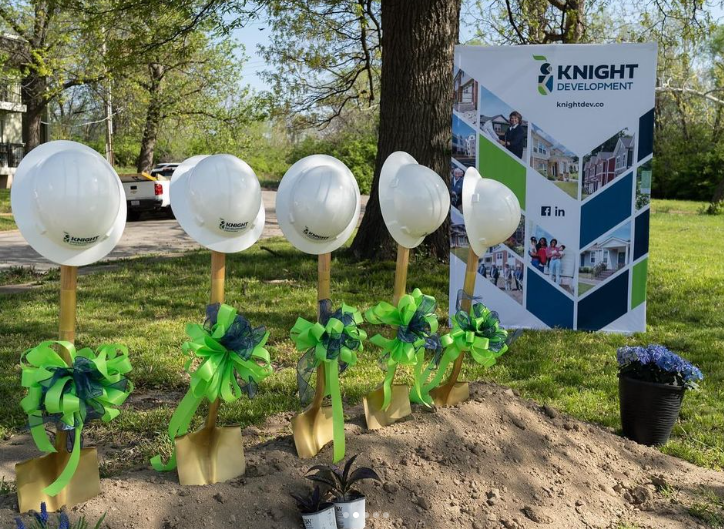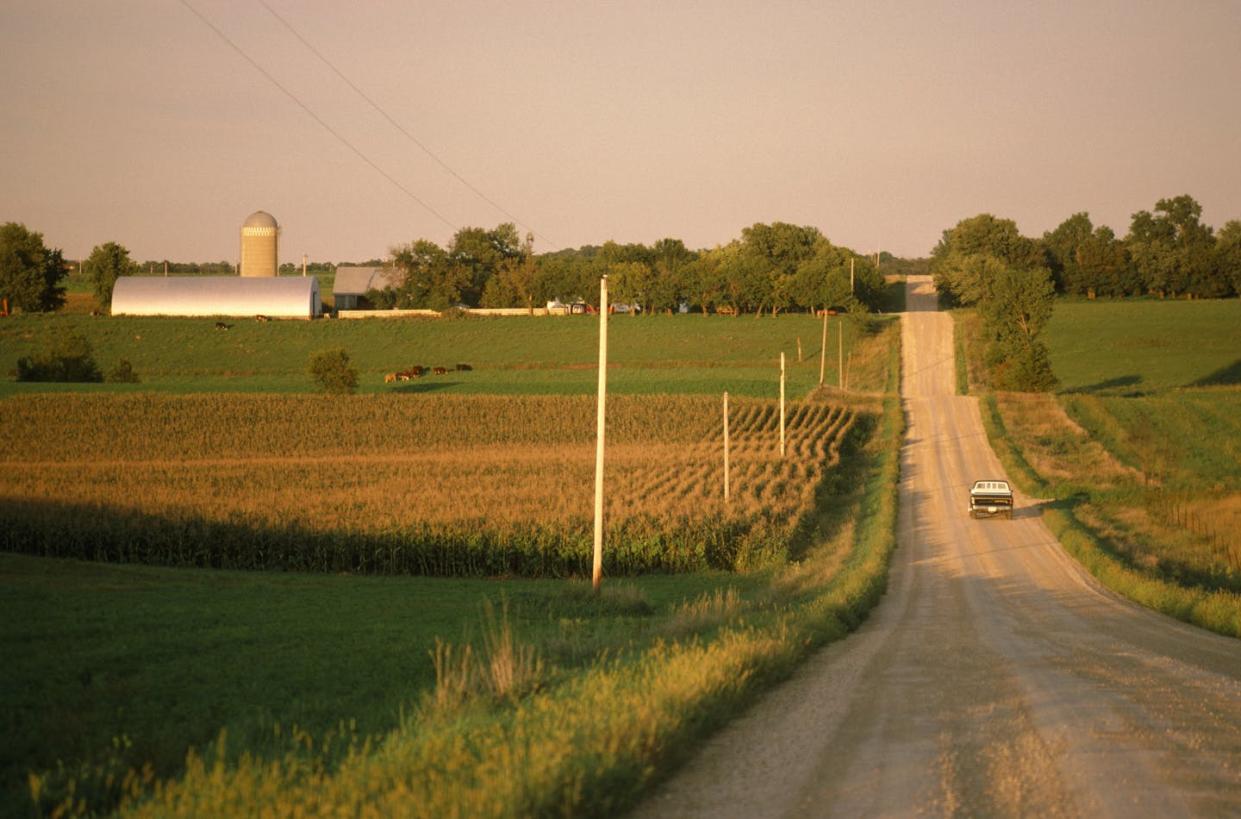Industrial Development Authority (IDA) – St. Louis Economic Development Partnership

Framework for Sustainable Development Projects Aligned with Global Goals
Definition and Scope of Qualifying Projects
A “Project,” as defined by Section 349.010, RSMo., encompasses a wide range of construction, extension, and improvement initiatives that are fundamental to achieving key Sustainable Development Goals (SDGs). These projects are designed to build resilient infrastructure, promote inclusive and sustainable industrialization, and foster innovation.
- Public Infrastructure: The construction and improvement of public roads, which directly supports SDG 9 (Industry, Innovation, and Infrastructure) and SDG 11 (Sustainable Cities and Communities) by improving connectivity and access.
- Industrial and Commercial Facilities: The development of factories, manufacturing plants, distribution centers, warehouses, office buildings, and commercial facilities. These projects are crucial for advancing SDG 8 (Decent Work and Economic Growth) and SDG 9.
- Health and Well-being Infrastructure: The construction of for-profit or not-for-profit hospitals and not-for-profit nursing or retirement facilities, directly contributing to SDG 3 (Good Health and Well-being).
- Recreational and Social Facilities: The development of physical fitness and recreational facilities by not-for-profit organizations, which promotes community health under SDG 3 and fosters social inclusion as part of SDG 11.
- Environmental Protection: The establishment of facilities for the prevention, reduction, or control of pollution. This is a critical component for achieving SDG 11, SDG 12 (Responsible Consumption and Production), and SDG 13 (Climate Action).
The definition includes all required fixtures, equipment, and machinery for these facilities but excludes public utilities such as electricity, gas, water, telephone, and cable television distribution systems.
Key Project Categories and SDG Alignment
Specific examples of projects under this framework demonstrate a direct and measurable contribution to the 2030 Agenda for Sustainable Development.
- Affordable Housing: Directly supports SDG 11 (Sustainable Cities and Communities) by ensuring access for all to adequate, safe, and affordable housing and contributes to SDG 1 (No Poverty).
- Nonprofit Nursing Homes and Senior Living: Aligns with SDG 3 (Good Health and Well-being) by providing essential health services and dignified living conditions for aging populations.
- Nonprofit Recreational Facilities (i.e., YMCA): Promotes SDG 3 (Good Health and Well-being) through physical activity and enhances community cohesion in line with SDG 11.
- Economic Development Projects (i.e., TIF and CID projects): Advances SDG 8 (Decent Work and Economic Growth) and SDG 9 (Industry, Innovation, and Infrastructure) by stimulating local economies, creating jobs, and revitalizing community infrastructure.
- Small Manufacturing Projects: Fosters SDG 8 through local job creation and supports SDG 9 by promoting inclusive and sustainable industrialization at a community level.
Analysis of Sustainable Development Goals (SDGs) in the Article
1. Which SDGs are addressed or connected to the issues highlighted in the article?
-
SDG 3: Good Health and Well-being
- The article connects to this goal by including the “construction, extension and improvement” of facilities such as “for-profit or not-for-profit hospital, not-for-profit nursing or retirement facility,” and “physical fitness, recreational, indoor and resident outdoor facilities operated by not-for-profit organizations.” These projects directly contribute to the health infrastructure and well-being of the community.
-
SDG 8: Decent Work and Economic Growth
- This goal is addressed through the focus on projects that stimulate economic activity and create employment. The article lists “factory, assembly plant, manufacturing plant, processing plant, fabricating plant, distribution center, warehouse building, office building,” and “commercial or agricultural facility.” The common examples further reinforce this by including “Economic Development Projects” and “Small Manufacturing Projects.”
-
SDG 9: Industry, Innovation and Infrastructure
- The core of the article is the definition of “Project,” which is fundamentally about infrastructure development. It explicitly mentions the “construction, extension, and improvement of public roads” and various industrial facilities like “manufacturing plant” and “distribution center,” which are central to building resilient infrastructure and promoting sustainable industrialization.
-
SDG 11: Sustainable Cities and Communities
- The article directly relates to this goal by listing “Affordable Housing” as a common example of a project. Additionally, the development of “public roads,” “public facility,” and “recreational… facilities” are all essential components for creating inclusive, safe, resilient, and sustainable communities.
-
SDG 12: Responsible Consumption and Production
- This goal is relevant due to the inclusion of “facilities for the prevention, reduction or control of pollution.” Such projects are aimed at managing waste and pollutants, which is a key aspect of sustainable production patterns and environmental protection within communities and industries.
2. What specific targets under those SDGs can be identified based on the article’s content?
-
SDG 3: Good Health and Well-being
- Target 3.8: Achieve universal health coverage, including financial risk protection, access to quality essential health-care services. The construction of “hospitals” and “nursing or retirement facilities” directly supports the infrastructure needed to provide essential health-care services.
-
SDG 8: Decent Work and Economic Growth
- Target 8.2: Achieve higher levels of economic productivity through diversification, technological upgrading and innovation. The development of “manufacturing plants,” “processing plants,” and “distribution centers” supports industrial diversification and productivity.
- Target 8.3: Promote development-oriented policies that support productive activities, decent job creation… and encourage the formalization and growth of micro-, small- and medium-sized enterprises. The specific mention of “Small Manufacturing Projects” aligns directly with this target.
-
SDG 9: Industry, Innovation and Infrastructure
- Target 9.1: Develop quality, reliable, sustainable and resilient infrastructure, including regional and transborder infrastructure, to support economic development and human well-being. The mention of “public roads” and “public facility” directly addresses the development of foundational infrastructure.
- Target 9.2: Promote inclusive and sustainable industrialization. The focus on building a wide range of industrial facilities (“factory, assembly plant, manufacturing plant”) contributes to this target.
-
SDG 11: Sustainable Cities and Communities
- Target 11.1: By 2030, ensure access for all to adequate, safe and affordable housing and basic services. The inclusion of “Affordable Housing” as a common example is a direct link to this target.
- Target 11.7: By 2030, provide universal access to safe, inclusive and accessible, green and public spaces. The development of “recreational… facilities operated by not-for-profit organizations” supports this goal.
-
SDG 12: Responsible Consumption and Production
- Target 12.4: By 2020, achieve the environmentally sound management of chemicals and all wastes throughout their life cycle… and significantly reduce their release to air, water and soil. The construction of “facilities for the prevention, reduction or control of pollution” is a direct action towards achieving this target.
3. Are there any indicators mentioned or implied in the article that can be used to measure progress towards the identified targets?
The article does not mention any explicit, quantitative indicators. However, the types of projects listed imply indicators that could be used to measure progress. These are primarily output-based indicators related to the construction and improvement of facilities.
-
SDG 3: Good Health and Well-being
- Implied Indicator: The number of new or improved healthcare facilities (hospitals, nursing homes) and recreational centers constructed under the project definition.
-
SDG 8: Decent Work and Economic Growth
- Implied Indicator: The number of economic development projects, manufacturing plants, or commercial facilities established. A secondary indicator could be the number of jobs created by these projects.
-
SDG 9: Industry, Innovation and Infrastructure
- Implied Indicator: The number or scale of infrastructure projects completed, such as miles of “public roads” improved or the square footage of new industrial facilities (“factory, manufacturing plant”) built.
-
SDG 11: Sustainable Cities and Communities
- Implied Indicator: The number of “Affordable Housing” units constructed or the number of new public “recreational facilities” made available to the community.
-
SDG 12: Responsible Consumption and Production
- Implied Indicator: The number of “facilities for the prevention, reduction or control of pollution” that have been constructed or upgraded.
Summary of Findings
| SDGs | Targets | Indicators (Implied from Article) |
|---|---|---|
| SDG 3: Good Health and Well-being | 3.8: Achieve universal health coverage and access to quality essential health-care services. | Number of new or improved hospitals, nursing homes, and recreational facilities. |
| SDG 8: Decent Work and Economic Growth | 8.2: Achieve higher levels of economic productivity. 8.3: Promote policies for productive activities and job creation, supporting small enterprises. |
Number of economic development projects and small manufacturing plants established; jobs created. |
| SDG 9: Industry, Innovation and Infrastructure | 9.1: Develop quality, reliable, and resilient infrastructure. 9.2: Promote inclusive and sustainable industrialization. |
Miles of public roads improved; number and scale of industrial facilities constructed. |
| SDG 11: Sustainable Cities and Communities | 11.1: Ensure access to adequate, safe and affordable housing. 11.7: Provide universal access to safe and inclusive public spaces. |
Number of affordable housing units built; number of public recreational facilities developed. |
| SDG 12: Responsible Consumption and Production | 12.4: Achieve environmentally sound management of wastes and reduce their release. | Number of pollution prevention, reduction, or control facilities constructed. |
Source: stlpartnership.com
What is Your Reaction?
 Like
0
Like
0
 Dislike
0
Dislike
0
 Love
0
Love
0
 Funny
0
Funny
0
 Angry
0
Angry
0
 Sad
0
Sad
0
 Wow
0
Wow
0


















































.jpg.webp?itok=0ZsAnae9#)





/environment-climate-change-and-health-(ech)/water-sanitation-hygiene-and-health-(wsh)/landfill-tuvalu-36092.tmb-1200v.jpg?sfvrsn=5c21fe40_1#)


















